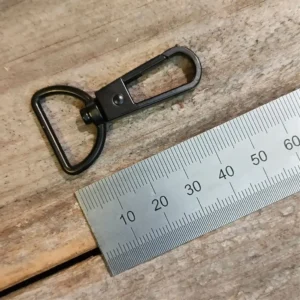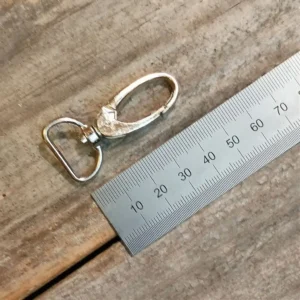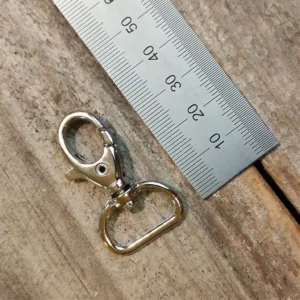Materials
Each material has its own unique properties, and on this page I will explain a little about the properties of the different materials to make it easier for you to choose the most suitable one.
Origin of materials
I order materials from Finland and other EU countries. Where possible, I also use materials/components manufactured in the EU. Remmi also offers Finnish materials.
Leather
Leather is a durable and versatile material. It can be used to make clothes, shoes, gloves and almost anything else. I use vegetable tanned leather in my products. Tanning means that the raw leather is cleaned, treated and chemically processed to make it more durable, so it doesn’t deteriorate. Vegetable tanning uses different plants or parts of plants to extract their tannins for use in the process. These plants include oak, mimosa, sumac and sometimes even coffee. Vegetable tanning is the oldest method of tanning leather, with roots going back as far as two thousand years. Italy is one of the leading countries for leather processing and is home to the best tanneries in the world. I myself use almost exclusively Italian leather in my products.
Remmit
Textile straps can be made of different materials. There are some essential differences between the materials, which you can read more about below.
Polypropylene
Polypropylene (PP) is one of the most common materials used in rubber strapping. It is a synthetic material with the essential characteristics of lightness, moderate durability and low cost. Its low price makes it a common material for backpack straps, for example. PP straps are slightly thicker than other strap materials, but also slightly softer. PP fibres do not absorb water and are therefore buoyant. UV resistance is generally good. A standard polypropylene webbing can usually withstand a load of about 200 kg.
Polyester
Polyester (PES) is a durable material. Belts made from it can withstand much higher loads than PP belts and also have better abrasion resistance. The heat resistance is also significantly better than polypropylene (melting point approx. 250 vs. 175). Polyester reels can be thinner than PP reels, but still heavier. UV resistance is good with polyester. Polyester absorbs water and is not buoyant. Depending on the manufacturer, polyester webbing can withstand loads of a few hundred kilos. For example, a Finnish mil-spec quality polyester webbing can withstand up to 700 kg.
Polyamide (PA, Nylon)
Polyamide, or nylon in everyday language, is a very durable material. Belts made from it can withstand the same or often greater loads than polyester belts. It is also slightly flexible and has the best heat resistance of the three materials (melting point around 270°C). UV resistance is not always quite on a par with polyester and it absorbs moisture like polyester. When wet, it stretches somewhat. Nylon is a trademark of the DuPont company from which it has become common in the vernacular. Cordura is the brand name of the Invista company for a polyamide fabric made to their specifications. Invista also manufactures the fibres used in nylon fabrics. Nylon tapes are also very durable and, depending on the manufacturer, can withstand loads of several hundred kilos. The German polyamide webbing we use is rated to withstand loads of around 1000 kg.
Plastic parts
Plastic parts are made of many different materials, the most common being acetal and nylon. Acetal has the advantage of a wide temperature resistance and excellent bending memory (return to the same position). Acetal quick connectors are often identified by a distinct “click” sound. Nylon has the advantage of better resistance to high temperatures; otherwise, parts of similar size are almost equivalent in terms of resistance. Our acetal products have been used to make better buckles such as 2M and ITW Nexus.
Metal parts (rivets, locks, etc.)
The metal parts I use are made of steel, brass and zinc alloy. Often the metal parts are coated with another metal or paint. The durability of coatings varies and some last longer than others. Naturally, I also use my own products in everyday use and have been satisfied with the quality of the parts I use and the durability of the coatings.
Locks
All the locks I use are zinc alloy (usually e.g. Zamac, velvet) which is a durable and light material. It is not a tough material like steel, but when the load exceeds its strength it tends to crack, while steel bends accordingly. Below are pictures of the locks to give you an idea of their size.



Key rings
Most of the key rings I use are steel, a small number are brass. Silver-coloured rings are currently made of stainless steel.
Rivets and others
The rivets are steel or brass, as are the D-links or O-rings.
Zippers, fabrics, threads
I almost exclusively use high quality YKK zippers. The main fabrics are usually polyester, Cordura or similar. For sewing I use threads from Gütermann, Coats and A&E.
